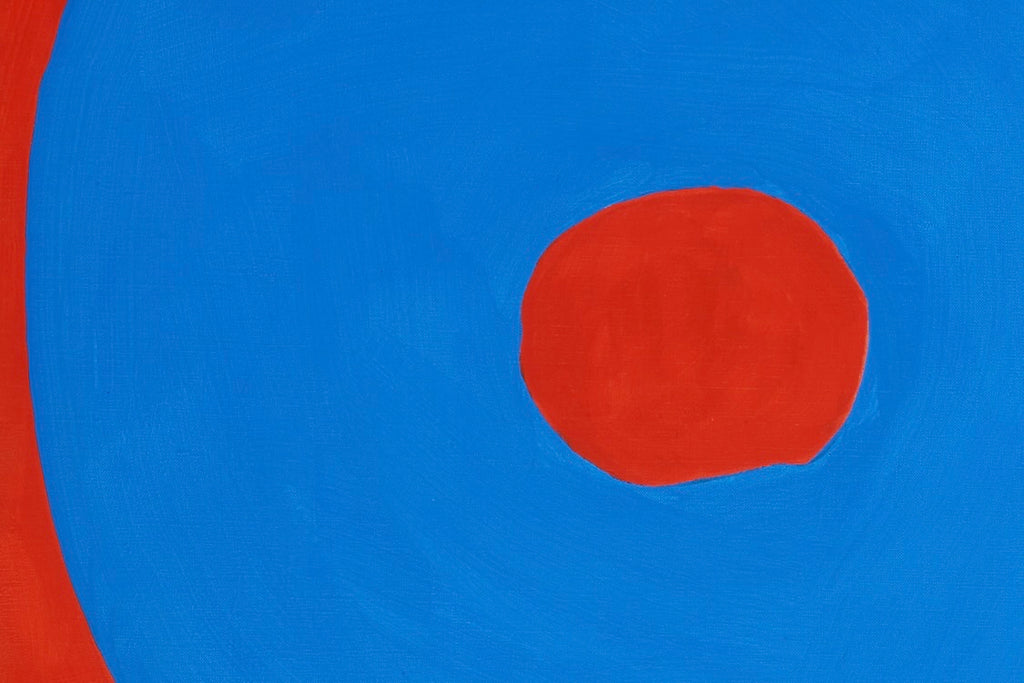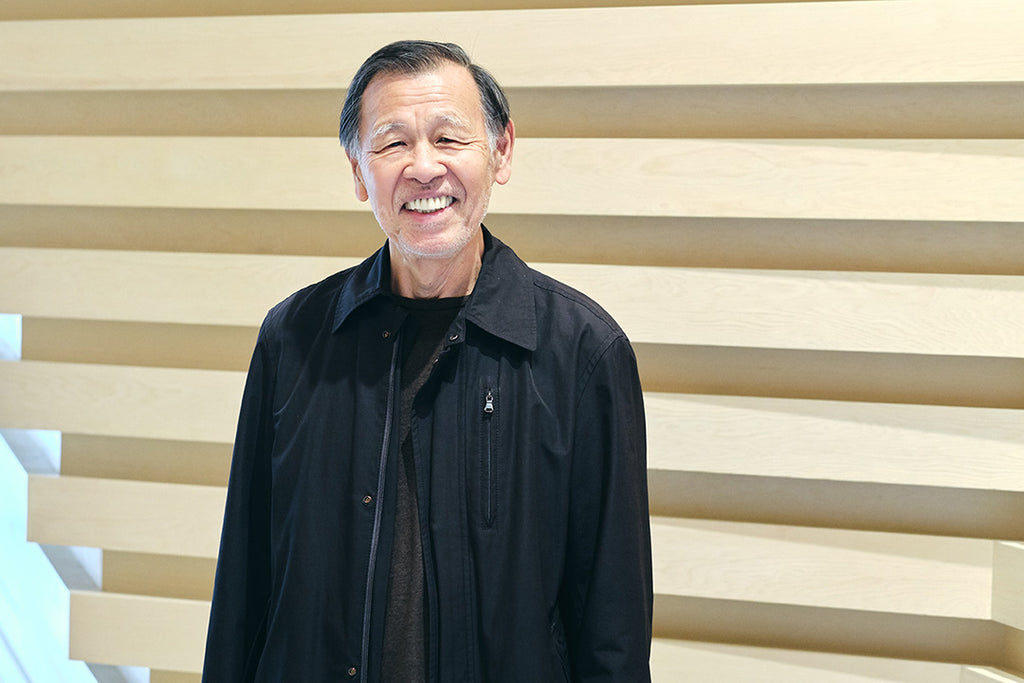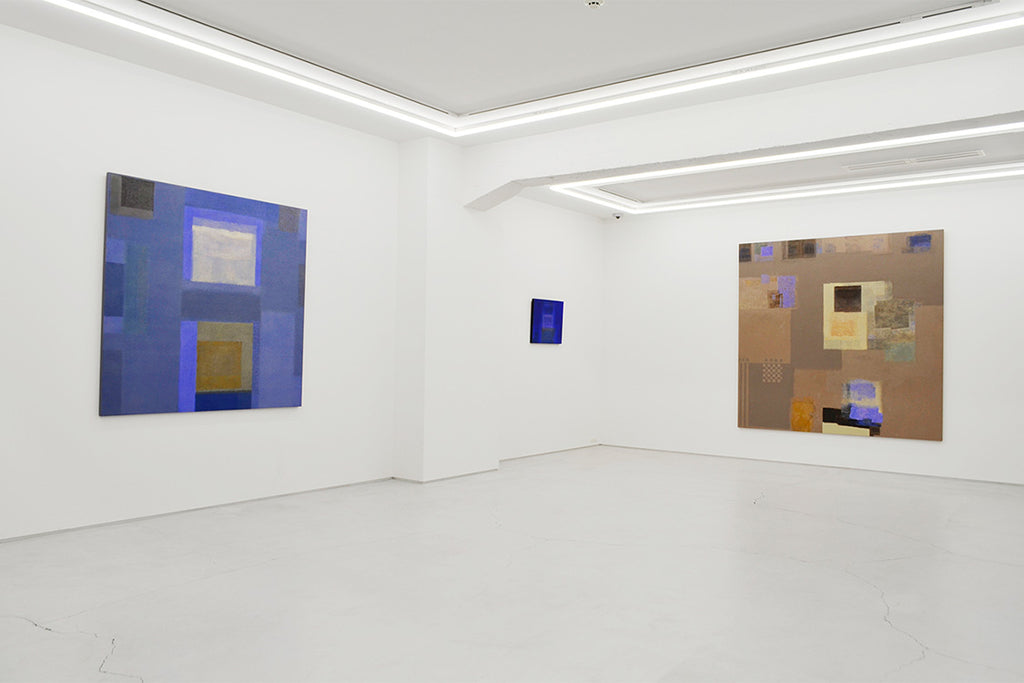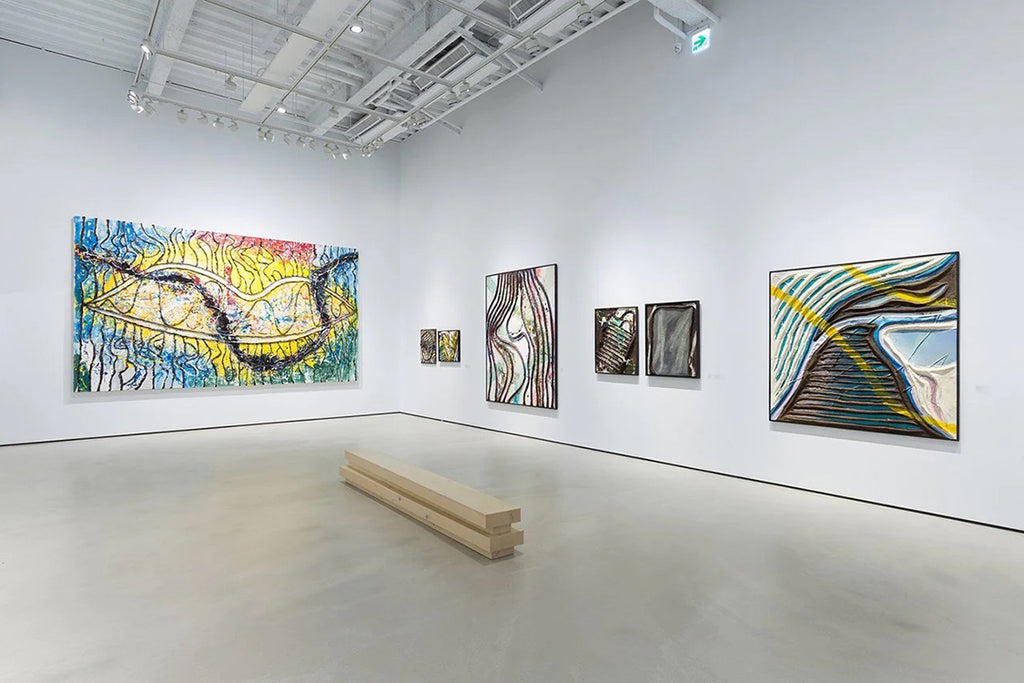ARTICLES
Yayoi Kusama as I Know Her
A New Appreciation Contemporary Japanese and Asian Art
6/23

A New Appreciation Contemporary Japanese and Asian Art
In our ongoing series, we present the digital archive of the book 'A New Appreciation Contemporary Japanese and Asian Art' This book delves into internationally acclaimed artists and the dynamics of the Asian art market. The sixth installment introduces Yayoi Kusama.
Yayoi Kusama as I Know Her
Seiichi Yayanagi
Art Dealer, former Sotheby’s Japan Deputy Director
Yayoi Kusama Exhibition Launched My Career as an Art Dealer
I realized my long held dream to become an art dealer when I joined Fuji Television Gallery after my graduation in 1986. I was assigned to the team organizing Kusama’s June 1986 Infinity∞Explosion exhibition. It was her third exhibition at the gallery and consisted mainly of new works . 19 sculptures and 3 paintings ranging in price from 400 thousand yen to 1.3 million yen. Until closing in 2006, the gallery held a total of six large-scale exhibitions and carred out a large number of planning, promotion, and support activities in Japan and overseas. The gallery was located in Kawada-cho, near Tokyo Women’s Medical University, and within walking distance of where Kusama lived and had her studio. The gallery later moved to Odaiba and Yurakucho but shared location with Fuji Television at the time. Kusama would frequently visit the gallery when she was in good spirits, rid.ing in the passenger seat of a station wagon driven by her secretary. She would chat good-naturedly with gallery clients and staff.
Various Experiences
I could easily integrate into the art field because I was born and raised in the household of an artist. However, I had no practical experience organizing exhibitions or creating promotional materials and catalogs. Late at night, when everything was removed from the walls in preparation for producing the exhibition catalog, we would have a party in the gallery, with catering from the cafeteria in Fuji Television’s basement next door. The gallery space was large but at openings many familiar faces would crowed in, including individual collectors, artists, art critics, curators, other gallerists, Kusama and her secretary. I was used to the atmosphere because I had attended my father’s solo exhibition at the Galerie Solstice in Paris and many others with my family since the time I was a child. However, when it came to socializing for business, I was a little uneasy. I didn’t know what to talk about with the guests. I felt anxious about having to do sales. Seeing me frozen in place, Kusama came up to me and said to me in a soft voice, “You’re under pressure to sell, aren’t you?” trying to encourage me. But I could not move. In the end, I did not manage to sell even one artwork at my debut exhibition. Prints were being sold in the back office to interested quests, and it was not easy at prices of around 20 thousand to 40 thousand yen.
My senior co-workers struggled during the period of the exhibition to sell larger works and sculptures. I was somehow relieved to see that only one work was on reserve for a public museum and that only a few works had been sold to a private collector. That was the situation at the time. I gradually became more confident after I sold my first piece and became more knowledgeable about sales techniques and successful in my approaches to private collectors and museums During my 20 and a half years at Fuji Television Gallery and 11 and a half years at Sotheby’s Japan, I was able to circulate many wonderful Kusama works. I have many stories to tell but will introduce just a few here having to do with my selling some of Kusama’s important works.
Conveying Kusama to Museums
One of the most important achievements in my life as an art dealer was the sale of Kusama’s No. A.B. (1959, oil on canvas, 210.3 x 414.4 cm) to the Toyota Municipal Museum of Art. Fuji Television Gallery had exhibited this indisputable masterpiece at the 45th Venice Biennale Japan Pavilion in 1993 and completed its sale for around 17 million yen the following year. From the perspective of today, that was a remarkably low price (it conceivably would command more than a billion yen were it on the market today). However, it was not easy to pass the approval of the city council collection committee. At the time, the office set up to prepare for the Museum opening was in the city office (later within the Museum building), and overseen initially by a single inexperienced woman curator. Several curators joined later but Mr. A from Gifu Prefecture was the only one with experience. Among many curators I have met so far, he was the most unusual and open-minded. Though they would sometimes argue for hours about the proposed work but, because they were of one mind in their passion and ideas on its value, the piece eventually became part of the Museum collection. My maternal grandparents are from Gifu Prefecture and I have relatives in Nagoya. Maybe because of this, I have been able to cultivate very good relationships with museums, collectors, companies and art world people that continue until today in the Tokai region.
A Kusama Dream
I was asked by Mr. B, who was thinking about his legacy, for advice. Finally, his Kusama work sold at Sotheby’s Contemporary Art Evening Auction in New York on May 14th 2014 for 350 million yen, four times the lower estimate appraisal price. I was at the auction and immediately called him on my mobile phone to re.port. When I came back to Japan we had a very pleasant evening with delicious food and wine at a local French restaurant. The sale was not only an ‘American dream,’ it was a ‘Kusama dream.’
The Prices of Kusama’s Works
In my thirty-three years experience at Fuji Television Gallery and Sotheby’s, I have seen many Kusama works. I can think of only one other example of an artist whose prices soared to such an extent worldwide in such a short period. That art.ist is Zao Wou-ki (also a Fuji Television Gallery artist). During the time Kusama was represented by Fuji Television Gallery, her prints sold for between 20,000 to 40,000 yen, her plaster pumpkin objects for around 50,000 yen, shikishi boards for 3000 yen, SM size (22.7 x15.8 cm) for 100,000 yen, collages for 150,000, box.es for between 200,000 to 400,000 yen, 91.0x72.7cm tableau for 500,000. Large objects and large canvas over 162.0 x130.0 cm were mostly purchased by national and public museums and some private collectors. There were requests for SM size from other dealers, who would take 3 to 5 pieces. Kusama put some works aside for in-house purchase, but not many of our staff could afford these. The women staff found the yellow pumpkins cute and bought them in SM size or small objects and prints. One, seeing that Kusama was in a good mood ordered a box at a very cheap price. To everyone’s surprise, Kusama labeled the finished box with the name of the woman who ordered it, ‘so and so’s box.’
In today’s domestic and overseas secondary markets, Kusama’s prints command 1 to 10 million yen, the small pumpkins are around 5 million yen, shikishi boards 3 to 9 million yen, SM size works around 30 million yen, collage works have soared to 5 to 10 million yen. One of the small yellow pumpkins (of around 500) she gave away in front of the Japan Pavilion at the Venice Biennale vernissage recently garnered around 1 million yen at auction.
Creating a World Market
I experienced the Japanese ‘bubble’ economy of the 1980s, so I think I will be able to sense an overheated market about to break. I also know that value can be expected to come back, as in the case of Warhol. If you think only about the market during this time, then any artist’s work purchased in the past would appear under-priced. If someone bought a large quantity, because of the large margin of increase, that person could be a millionaire. Unfortunately, no one can imagine what would happen. Kusama continued her work every day, believing in herself. Not every artist works with such passion.
Kusama’s success story during the artist’s lifetime is a very rare case in the art world. However, the art market of today is based on speed. With the spread of the Internet, information is close at hand and can be accessed twenty-four hours a day all over the world. Overseas auction houses have expanded to include gallery spac.es and various other activities. Sotheby’s Hong Kong S2, for example, held a Kusama exhibition in 2012 that was a great success. In the past few years Japanese artists who had not had attention (because of a market lag) are attracting attention from all over the world. In order to create a world-class market, full participation of artists, dealers, auction houses, collectors, critics, museums, and companies is needed. I feel there will be opportunities for Japanese teams to create a number of cases like Kusama in the near future.
Seiichi Yayanagi
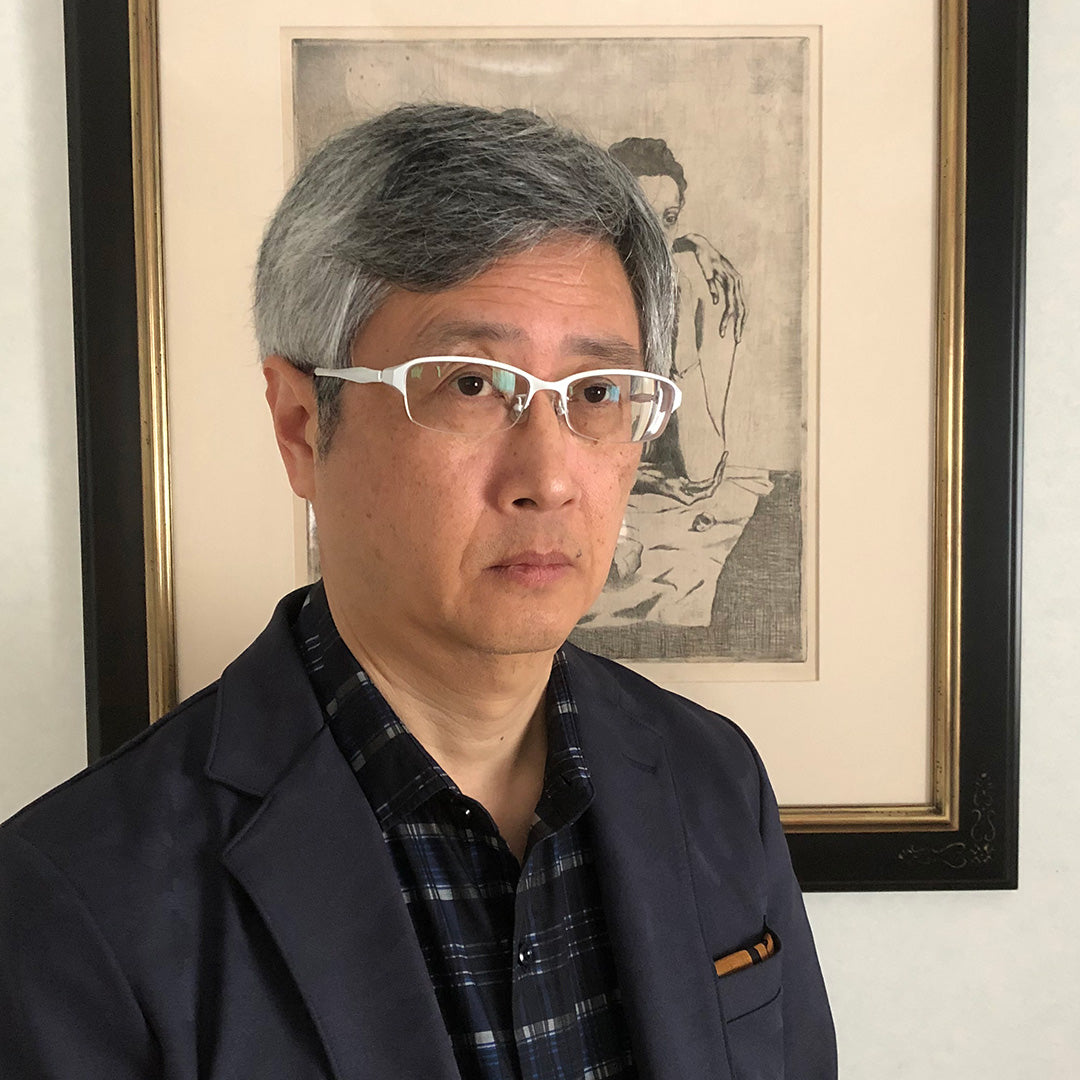
Born in Tokyo in 1961. Son of an artist, he spent his childhood in Paris. He began working at Fuji Television Gallery after graduating university in 1986 and built his career as Director, and then joined as Manager of Sotheby’s Japan in 2006. He retired as Deputy Director of Sotheby’s Japan in March 2017 and is now active as an independent art dealer.
Book Information
Title: A New Appreciation Contemporary Japanese and Asian Art (English Edition)
Publisher : Whitestone Co., Ltd.
Release Date : February 26, 2020
*Information in this article is at the time of publication.
